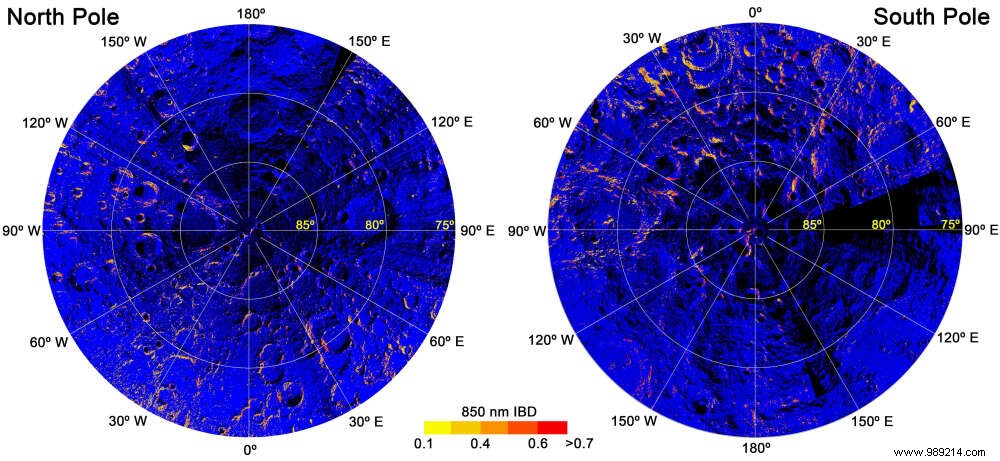Astronomers have isolated numerous deposits of hematite on the surface of the Moon. This is a surprising discovery since our satellite is devoid of oxygen.
Hematite is a rust-like type of oxidized iron that forms when iron reacts with oxygen . However, unlike our planet, the Moon is completely devoid of oxygen. In addition, it is constantly bombarded by a current of hydrogen carried by the solar wind. This has the effect of "adding" electrons to the materials that this hydrogen interacts with. And oxidation, conversely, occurs due to a loss of electrons .
A priori, therefore, our satellite is not really the best environment for the formation of hematite. Also, no one was surprised to find that all the lunar iron isolated both through remote observations and in the Apollo samples was completely pristine. And yet.
As part of a recent study using hyperspectral reflectance data acquired by the Moon Mineralogy Mapper (M3) of the Indian mission Chandrayaan-1, researchers have indeed noticed the presence of hematite at the poles . For the reasons cited above, this is a completely unexpected finding.
“When I looked at the M3 data in the polar regions, I noticed that some features and spectral patterns were different from what we see at lower latitudes or Apollo samples “, explains Shuai Li, of the Hawaii Institute of Geophysics and Planetology who led the research. "After months of investigation, I realized that I saw the signature of hematite “.

How to explain the presence of these highly oxidized ferrous minerals? A clue lies in the distribution of this hematite, which corresponds quite strongly to the traces of water previously identified in the same regions .
Shuai Li also linked these observations to a discovery made by the Japanese Kaguya mission which operated in the late 2000s. At the time, the researchers then pointed out that Oxygen from Earth's upper atmosphere could be blown onto the Moon's surface by the solar wind.
This same process could therefore easily explain the presence of hematite on our satellite, especially during periods of full Moon. At these times, our satellite is indeed positioned in the rear region of the Earth's magnetosphere far from the Sun. As a result, more than 99% of the solar wind is blocked for a few hours . In other words, during this short period of time, it no longer interferes with the oxidation process.
Combine these three factors (trace amounts of molecular water, trace amounts of oxygen, and a brief window of time each month in which rust can freely form) and a few billion years you can get hematite on the Moon.
The research team hopes that upcoming NASA ARTEMIS missions can collect samples of hematite from polar regions for analysis. Their chemical signatures could then confirm (or not) this hypothesis.